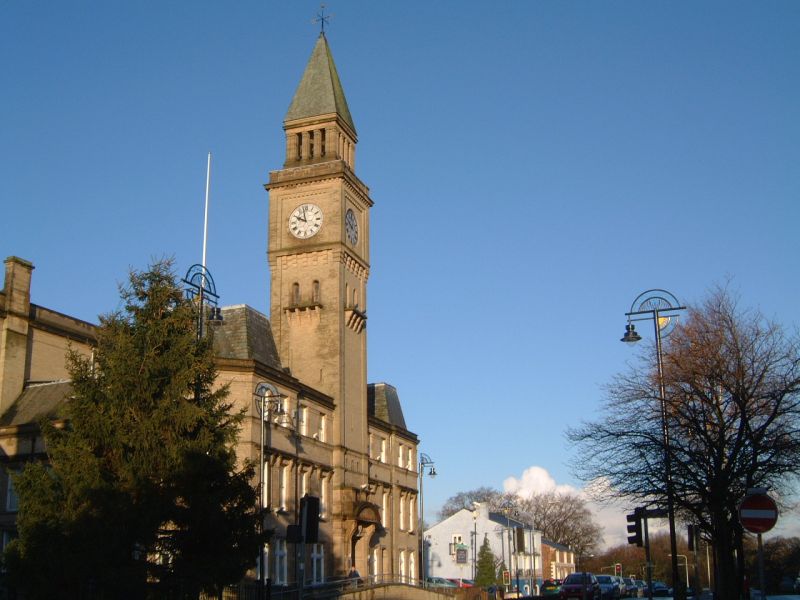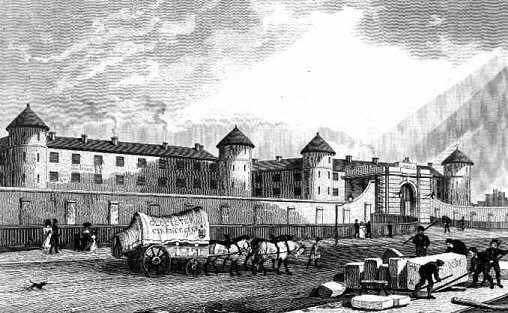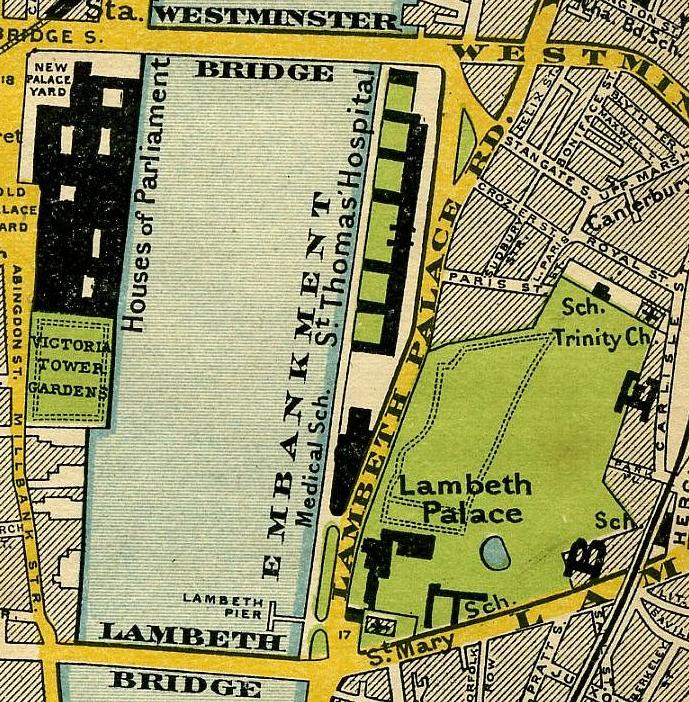|
Henry Tate
Sir Henry Tate, 1st Baronet (11 March 18195 December 1899) was an English sugar merchant and philanthropist, noted for establishing the Tate Gallery in London. Life and career Born in White Coppice, a hamlet near Chorley, Lancashire, Tate was the son of a Unitarian clergyman, the Reverend William Tate, and his wife Agnes Booth. When he was 13, he became a grocer's apprentice in Liverpool. After a seven-year apprenticeship, he was able to set up his own shop. His business was successful, and grew to a chain of six stores by the time he was 35. In 1859 Tate became a partner in John Wright & Co. sugar refinery, selling his grocery business in 1861. By 1869, he had gained complete control of the company, and renamed it as Henry Tate & Sons. In 1872, he purchased the patent from German Eugen Langen for making sugar cubes, and in the same year built a new refinery in Liverpool. In 1877 he opened a refinery at Silvertown, London, which remains in production. At the time, much of ... [...More Info...] [...Related Items...] OR: [Wikipedia] [Google] [Baidu] |
Chorley
Chorley is a town and the administrative centre of the wider Borough of Chorley in Lancashire, England, north of Wigan, south west of Blackburn, north west of Bolton, south of Preston and north west of Manchester. The town's wealth came principally from the cotton industry. In the 1970s, the skyline was dominated by factory chimneys, but most have now been demolished: remnants of the industrial past include Morrisons chimney and other mill buildings, and the streets of terraced houses for mill workers. Chorley is the home of the Chorley cake. History Toponymy The name ''Chorley'' comes from two Anglo-Saxon words, and , probably meaning "the peasants' clearing". (also or ) is a common element of place-name, meaning a clearing in a woodland; refers to a person of status similar to a freeman or a yeoman. Prehistory There was no known occupation in Chorley until the Middle Ages, though archaeological evidence has shown that the area around the town has been inhabit ... [...More Info...] [...Related Items...] OR: [Wikipedia] [Google] [Baidu] |
Millbank Prison
Millbank Prison or Millbank Penitentiary was a prison in Millbank, Westminster, London, originally constructed as the National Penitentiary, and which for part of its history served as a holding facility for convicted prisoners before they were transported to Australia. It was opened in 1816 and closed in 1890. Construction The site at Millbank was originally purchased in 1799 from the Marquess of Salisbury for £12,000 by the philosopher Jeremy Bentham, acting on behalf of the Crown, for the erection of his proposed panopticon prison as Britain's new National Penitentiary. After various changes in circumstance, the Panopticon plan was abandoned in 1812. Proposals for the National Penitentiary continued, however, and were given a legislative basis in the Penitentiary House, etc. Act of 1812 (52 Geo. 3 c. 44). An architectural competition for a new prison building on the Millbank site attracted 43 entrants: the winning design was that of William Williams, drawing master at the ... [...More Info...] [...Related Items...] OR: [Wikipedia] [Google] [Baidu] |
Queen's Nursing Institute
The Queen's Nursing Institute (QNI) is a charity that works to improve the nursing care of people in their own homes in England, Wales, and Northern Ireland. It does not operate in Scotland, where the Queen's Nursing Institute Scotland performs a similar function. The QNI is also affiliated to the Queen's Institute of District Nursing in Ireland. The QNI is a member of the International Council of Nurses. History In 1859, Liverpool merchant and philanthropist William Rathbone employed a nurse named Mary Robinson to care for his wife at home during her final illness. After his wife's death, Rathbone decided to employ Robinson to nurse people in their own homes who could not afford medical care. The success of this early experiment encouraged him to campaign for more nurses to be employed in the community. Elizabeth Malleson was concerned to find that there was little local service of nurses for pregnant women in the 1880s. Malleson arranged for a trained nurse and midwife to be ... [...More Info...] [...Related Items...] OR: [Wikipedia] [Google] [Baidu] |
Liverpool Royal Infirmary
The Liverpool Royal Infirmary was a hospital in Pembroke Place in Liverpool, England. The building is now used by the University of Liverpool. History The infirmary has its origins in a small building on Shaw's Brow which was opened by the 11th Earl of Derby on part of the site which is now occupied by St George's Hall on 25 March 1749. The second incarnation of the infirmary was designed by John Foster in the Greek Revival style and opened on Brownlow Hill in September 1824. This building was renamed the Liverpool Royal Infirmary after a visit of Queen Victoria to Liverpool in 1851. William Rathbone VI, based on advice from Florence Nightingale, set up the world's first ever district nursing service at this building in 1862. This led to the formation of the Queen's Nursing Institute. The foundation stone for a third incarnation of the infirmary, a much larger building, was laid by the 15th Earl of Derby in Pembroke Place on 28 October 1887. The new building, this time design ... [...More Info...] [...Related Items...] OR: [Wikipedia] [Google] [Baidu] |
Brixton
Brixton is a district in south London, part of the London Borough of Lambeth, England. The area is identified in the London Plan as one of 35 major centres in Greater London. Brixton experienced a rapid rise in population during the 19th century as communications with central London improved. Brixton is mainly residential, though includes Brixton Market and a substantial retail sector. It is a multi-ethnic community, with a large percentage of its population of British African-Caribbean community, Afro-Caribbean descent. It lies within Inner London and is bordered by Stockwell, Clapham, Streatham, Camberwell, Tulse Hill, Balham and Herne Hill. The district houses the main offices of Lambeth London Borough Council. Brixton is south-southeast from the geographical centre of London (measuring to a point near Brixton tube station, Brixton Underground station on the Victoria line, Victoria Line). History Toponymy The name Brixton is thought to originate from Brixistane, meanin ... [...More Info...] [...Related Items...] OR: [Wikipedia] [Google] [Baidu] |
South Lambeth
Lambeth () is a district in South London, England, in the London Borough of Lambeth, historically in the County of Surrey. It is situated south of Charing Cross. The population of the London Borough of Lambeth was 303,086 in 2011. The area experienced some slight growth in the medieval period as part of the manor of Lambeth Palace. By the Victorian era the area had seen significant development as London expanded, with dense industrial, commercial and residential buildings located adjacent to one another. The changes brought by World War II altered much of the fabric of Lambeth. Subsequent development in the late 20th and early 21st centuries has seen an increase in the number of high-rise buildings. The area is home to the International Maritime Organization. Lambeth is home to one of the largest Portuguese-speaking communities in the UK, and is the second most commonly spoken language in Lambeth after English. History Medieval The origins of the name of Lambeth come from ... [...More Info...] [...Related Items...] OR: [Wikipedia] [Google] [Baidu] |
Balham
Balham () is an area in south London, England, mostly within the London Borough of Wandsworth with small parts within the neighbouring London Borough of Lambeth. The area has been settled since Saxon times and appears in the Domesday Book as Belgeham. History The settlement appears in the ''Domesday Book'' as ''Belgeham''. Bal refers to 'rounded enclosure' and ham to a homestead, village or river enclosure. It was held by Geoffrey Orlateile. Its ''Domesday'' Assets were: 1½ ploughs, of meadow. It rendered (in total): £2. The Balham area has been settled since Saxon times. Balham Hill and Balham High Road follow the line of the Roman road Stane Street to Chichester – (now the A24 road). Balham is recorded in several maps in the 1600s as Ballam or Balham Hill or Balham Manor. The village was within the parish of Streatham. Large country retreats for the affluent classes were built there in the 18th century; however, most development occurred after the opening of Balham ... [...More Info...] [...Related Items...] OR: [Wikipedia] [Google] [Baidu] |
Streatham Library
Streatham Library is located at 63 Streatham High Road, Streatham, in the London Borough of Lambeth, England. The Library opened in 1890, and is one of several historical libraries in the vicinity which were built by Henry Tate. It is a public library. Henry Tate and the foundation of Streatham Library Henry Tate was the financial and organisational force behind the foundation of Streatham Library. The son of a clergyman, when he was 13 he became a grocer's apprentice in Liverpool. After a seven-year apprenticeship, he was able to set up his own shop. His business was successful, and grew to a chain of six stores by the time he was 35. In 1859 Tate became a partner in John Wright & Co. sugar refinery, selling his grocery business in 1861. By 1869, he had gained complete control of the company, and renamed it to Henry Tate & Sons. In 1872, he purchased the patent from German Eugen Langen on a method of making sugar cubes, and in the same year built a new refinery in Liverpool. ... [...More Info...] [...Related Items...] OR: [Wikipedia] [Google] [Baidu] |
Bedford College (London)
Bedford College was in York Place after 1874 Bedford College was founded in London in 1849 as the first higher education college for women in the United Kingdom. In 1900, it became a constituent of the University of London. Having played a leading role in the advancement of women in higher education and public life in general, it became fully coeducational (i.e. open to men) in the 1960s. In 1985, Bedford College merged with Royal Holloway College, another constituent of the University of London, to form Royal Holloway and Bedford New College. This remains the official name, but it is commonly called Royal Holloway, University of London (RHUL). History Foundation The college was founded by Elizabeth Jesser Reid (''née'' Sturch) in 1849, a social reformer and anti-slavery activist, who had been left a private income by her late husband, Dr John Reid, which she used to patronise various philanthropic causes. Mrs Reid and her circle of well-educated friends believed firmly in t ... [...More Info...] [...Related Items...] OR: [Wikipedia] [Google] [Baidu] |
Liverpool University
, mottoeng = These days of peace foster learning , established = 1881 – University College Liverpool1884 – affiliated to the federal Victoria Universityhttp://www.legislation.gov.uk/ukla/2004/4 University of Manchester Act 2004. legislation.gov.uk (4 July 2011). Retrieved on 14 September 2011.1903 – royal charter , type = Public , endowment = £190.2 million (2020) , budget = £597.4 million (2020–21) , city = Liverpool , country = England , campus = Urban , coor = , chancellor = Colm Tóibín , vice_chancellor = Dame Janet Beer , head_label = Visitor , head = The Lord President of the Council '' ex officio'' , students = () , undergrad = () , postgrad = () , colours = The University , affiliations = Russell Group, EUA, N8 Group, NWUA, AACSB, AMBA, EQUIS, EASN, Universities UK , website = , logo = Uni ... [...More Info...] [...Related Items...] OR: [Wikipedia] [Google] [Baidu] |
Liverpool Homeopathic Hospital
The Liverpool Homeopathic Hospital was a hospital in Liverpool, England, that specialized in homeopathic treatments. History The facility was founded as the Liverpool Hahnemann Hospital and Dispensaries in 1887. The hospital building at 42-56 Hope Street, designed by F & G Holme, is an example of the Queen Anne revival style. It is now a Grade II listed building. It was the first hospital in the United Kingdom to contain early hydraulic lifts and an innovative heating and ventilation system. It joined the National Health Service in 1948. Renamed as the Hahnemann Hospital in 1969, it was eventually closed in 1976. It later became part of Liverpool John Moores University , mottoeng = Fortune favours the bold , established = 1823 – Liverpool Mechanics' School of Arts1992 – Liverpool John Moores University , type = Public , endowment = , coor .... References {{authority control Defunct hospital ... [...More Info...] [...Related Items...] OR: [Wikipedia] [Google] [Baidu] |
Higher Education
Higher education is tertiary education leading to award of an academic degree. Higher education, also called post-secondary education, third-level or tertiary education, is an optional final stage of formal learning that occurs after completion of secondary education. It represents levels 6, 7 and 8 of the 2011 version of the International Standard Classification of Education structure. Tertiary education at a non-degree level is sometimes referred to as further education or continuing education as distinct from higher education. The right of access to higher education The right of access to higher education is mentioned in a number of international human rights instruments. The UN International Covenant on Economic, Social and Cultural Rights of 1966 declares, in Article 13, that "higher education shall be made equally accessible to all, on the basis of capacity, by every appropriate means, and in particular by the progressive introduction of free education". In Eu ... [...More Info...] [...Related Items...] OR: [Wikipedia] [Google] [Baidu] |





